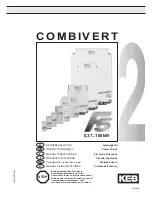
2882 Quick Start Guide
102
• External audio sources enter the 3d mixer through Input strips. Input strips can send to any output,
bus or both. Input strips are internally latency-compensated from their input through their assigned
output bus.
• Aux buses include their own fader, pan and mute for each Input strip independently of the Main mix
bus. Aux buses are for building a completely independent mix and can be used for effect sends (to be
returned to a Group or Main mix bus), or for independent cue mixes (to be routed out to the world).
Aux buses are internally latency-compensated when assigned to Group buses or the Main mix bus.
• Group buses are sub-mix buses. All the buses assigned to an input strip (Main + any groups) all share
the same fader, mute, and pan settings. Group buses can be routed to hardware ports out to the
world, to other Group buses, or the Main mix. Routing through Group buses within the mixer will
be internally latency compensated.
The fact that the buses are latency compensated means that you can sum channels to any of the buses,
and if you assign one bus to another bus the shared signals will be time-aligned and will not introduce
any phasing. You can utilize this to do parallel compression on submix buses or sum in a reverb bus that
includes a dry component.
Routing
Unit (box) Selector
Input (Source) Selector
Output (Destination) Selector
Filter selection by I/O type
Filter selection by text entry
Port channel selector
“Cascade” to apply routing across
a range of consecutive strips
Figure 4.12: Input source and Output destination routing selectors
Since 3d/MHLink domains are completely dynamic (in that you can add or remove boxes live, and up to
100m between...) the Input and Output routing selector UIs both offer filter-by-box, filter-by-port-type and
text-entry search tools to help manage the madness. Use the “Unit Selector” when you know which box
you need when they are in different locations, select by the port type when the boxes are clustered in a
rack, or combine search filters at will. Text-entry searches are dynamic - type “tos” and you are presented
with every TOSLINK port visible in the domain.
In the above graphic, note that some of the output ports in the Output selector on the right are greyed-
out and unavailable. In the case shown, those ports are occupied as a 5.1 Monitor Controller output and
a stereo Cue send, both to the ULN-8 root box #1. Automatic direct mults to outputs are not currently
supported in MIOConsole3d, but you can always use a Group or Aux bus to accomplish the same thing.














































